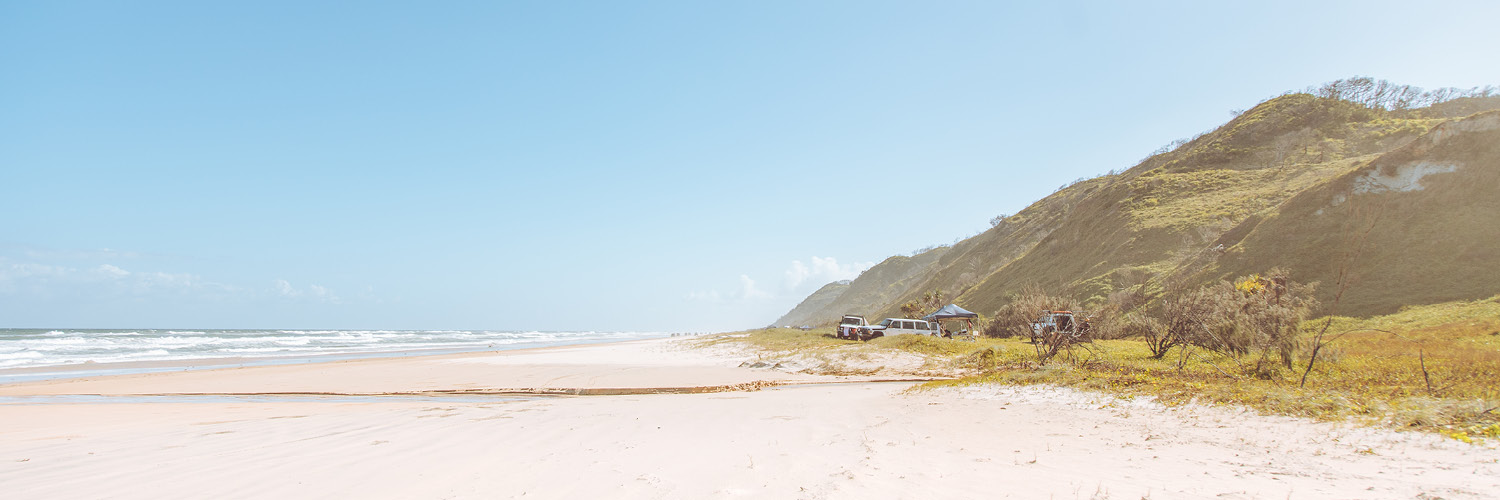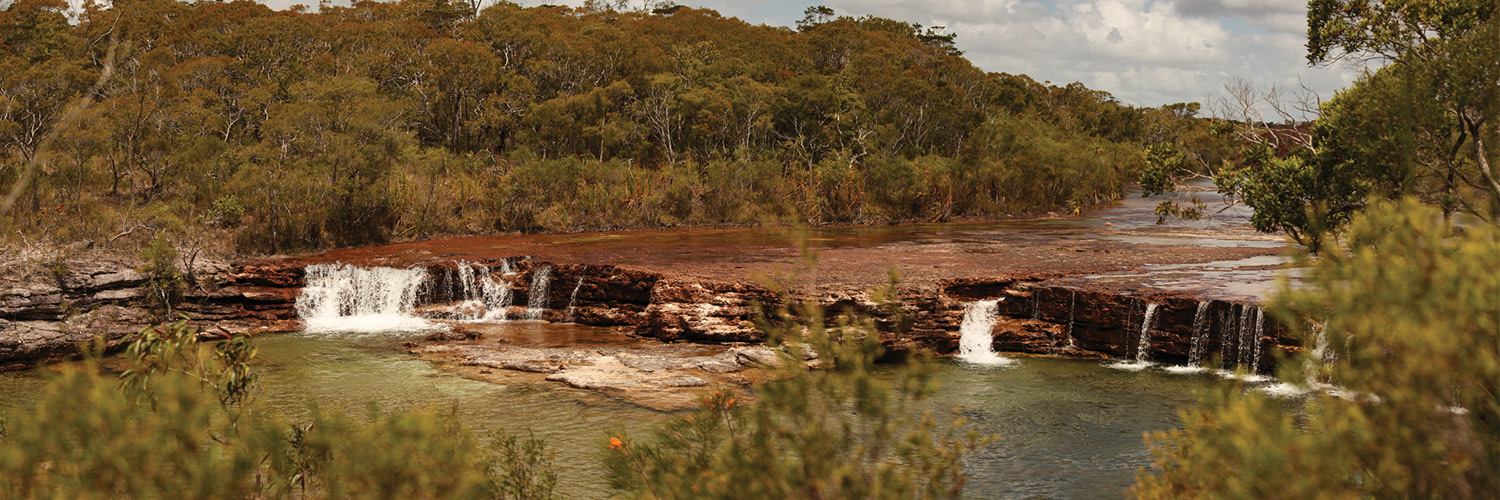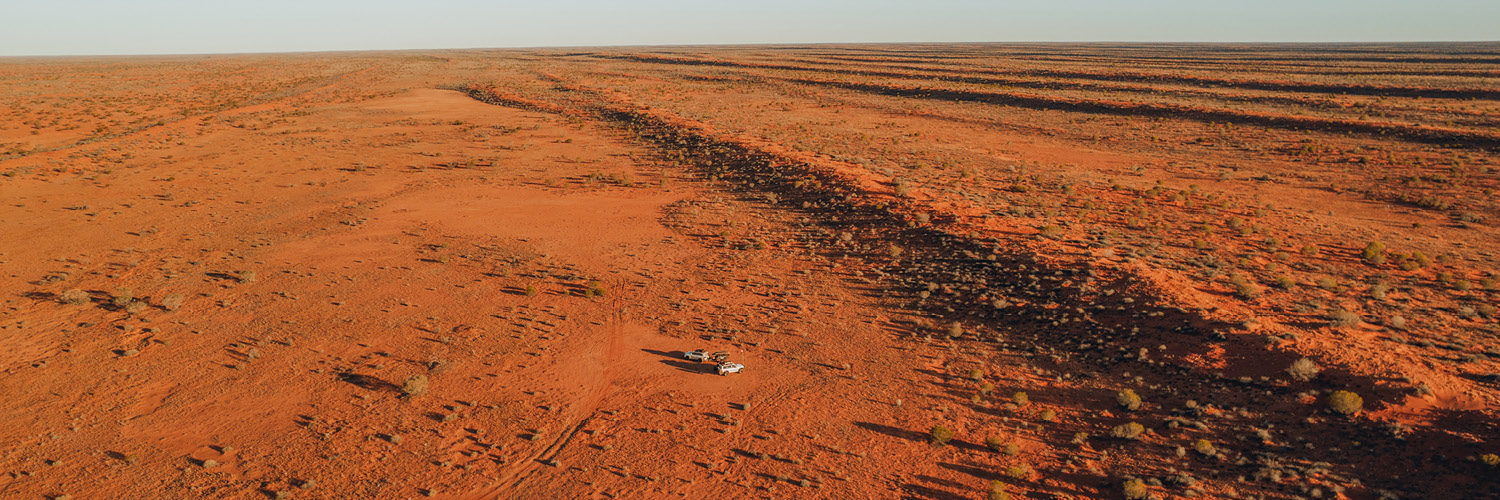When you're starting out, sometimes the big iconic bucket-list trips and tracks can feel a little daunting. There, we said it.
If you're reading this, we'll guess you've done a few off-road beach trips. You know your way around a tent or a swag. Maybe you've done some tracks in the back of a local forest, or even spent some time at a dedicated 4x4 park. But those bigger trips... you're not so sure you're ready for them, right?
We remember what it was like starting out. Even if you're not new to off-roading, we reckon you'll have experienced this feeling of being daunted by a trip, and maybe still do.
So to help get you on your way, we've compiled a few destinations you're probably more ready for than you think.

D E S T I N A T I O N 0 1
Experience: Beginner
Best time to go: It's beautiful all year round, but Oct–Mar is best for taking full advantage of the swimming
Fraser might not be quite as intimidating as many iconic off-road destinations. When you're new to everything though, it can seem a little out of reach.
![]()
Lake McKenzie is famous for it's crystal clear waters and white sand.
![]()
A convoy of cars drives past the wreck of the SS Maheno.
As a beginner, there are a few things to be mindful of. You'll want to have some experience driving in sand. It's best to time your arrival and departures on an outgoing tide, when the water is further down from the hide tide mark, and the sand firmer. There are some trickier sections; the soft sand at Ngkala Rocks about halfway up the eastern side, is one of them. But overall, the island is pretty straightforward driving and packed full of incredible spots.
It's easy to underestimate just big Fraser is. As the world's largest sand island, you can easily spend a week, and still only scratch the surface of what it has to offer. Some of our favs are Lake McKenzie, the Champagne Pools, Eli Creek and the Maheno Wreck. And if you're lucky, you'll even get to spot a dingo, or ten!
![]()
It's hard not to fall in love with the locals.
![]()
Dingoes are often spotted at dawn and dusk along Fraser's Seventy-Five Mile Beach.
D E S T I N A T I O N 0 2
The Cape
Experience: Moderate
Best time to go: May–Oct, depending on the wet season
The Cape has a big rep, and so it's no surprise that it's high on most people's bucket lists. Waterfalls, creek crossings, infamous tracks, beaches, crocs and a sense of real adventure make the Cape feel like one of the East Coast's last frontiers.

Sometimes those who are less confident talk about skipping the Old Telegraph Track via the Bypass roads, which is an option, and one there is no shame in. But to be honest, the Tele is part of what makes a trip to the Tip so great.
We'd recommend just getting some time in low range under your belt, as well as an understanding of the way your vehicle performs off-road. Soon enough, you'll feel ready. And if you're still unsure, many of the trickier crossings have sidetracks that bypass the more complex ones, allowing you to take a line to suit your skills.
![]()
It's fun to tackle some of the Old Tele's most famous sections, like Palm Creek (left) and Gunshot (right).
![]()
The sign at Pajinka, marking it as Australia's most northern point.
A few of the team here at KAON say the Cape was their first big trip. Before going, they questioned their ability, but with a little research, some planning and a bit of practice off-road, they set off. Afterwards, they all had the same thought: "Why were we so worried?" And then: "What can we do next!"
If you're hitting the Cape, there are a lot of iconic tracks to consider. The Old Telegraph Track, which starts at Bramwell Junction, needs no introduction. But you've also got the Frenchmans Track, the Five Beaches at Pajinka, Old Coach Road near Maytown, and even the CREB through the Daintree. These vary in skill level, so definitely do your research beforehand. Some of the incredible spots we'd say are 'must-see's' while you're up there are Rinyirru (Lakefield) NP, Chilli Beach, Fruit Bat Falls, Gunshot, and of course Pajinka, or as it's better known: The Tip.
![]()
One of the numerous crossings on the Old Telegraph Track, Cockatoo Creek.
![]()
While hitting the Cape, it's worth making time to visit Rinyirru NP (left) and Chilli Beach (right).
D E S T I N A T I O N 0 3
The Simpson
Experience: Moderate to Experienced
Best time to go: May–Sept (Simpson Desert Regional Reserve is closed from 1 Dec–15 Mar)
Smack bang in the literal red heart of Australia, the Simpson isn't something we would recommend you tackle when first starting out. But even for those of us who have a few trips under our belts, it can feel a little unreachable.

It seems like a big deal, and justifiably so – it's removed from any amenities, in what can be an unforgiving environment. For many, the idea of something going wrong is what keeps them from going. But if you've got a reasonable level of experience and have been eyeing off the Simpson, we'd encourage you to give it a go.
If you don't know where to start with prep, we'd suggest you get more intimate knowledge of your vehicle, ensure it's running like a well-oiled machine, and work out your estimated fuel and water consumption. You probably already know what you need; things like tools, bush mechanic odds and sods, and essential spares, to name a few. And whilst on higher-traffic routes like the French Line you'll likely encounter many other people, it's always more fun (and safer) to travel in convoy.
For the Simpson, preparation is the antidote to fear.
![]()
Getting a run-up for Big Red (Nappanerica), the gateway to the Simpson.
![]()
There's nothing quite like watching day turn to night from the top of a dune.
Once you're there, it's the kind of trip where the old cliche "it's about the journey, not the destination" really rings true. Yes, there are some iconic spots: Big Red, Poeppel Corner, Dalhousie Springs, Mount Dare... but really, the desert is at its best when you're right in the middle of it, far away from everything, and everyone. It's the sheer remoteness and isolation you feel in places like the Simpson that makes it so formidable and appealing all at once.
Just make sure to take the time to appreciate this feeling while you're out there. Take a moment at dusk, and climb up one of the dunes. Watch as the sun sinks below the horizon, shifting the colours of the sand from pale orange to deep, rich rust. Feel the weight of the silence that envelopes everything like a blanket, and if you have the time, wait for the stars. We promise they're worth it.
We say that our mission at KAON is to create gear that gives you the confidence to get out there and explore. Gear is a part of feeling trip-ready, but so is knowledge and experience. Do some research, get the right experience, and you'll start to realise you're more ready than you think.
Now, what are you waiting for? Get out there and start exploring!
Need more trip inspo? Shop our Microfibre Cloth Touring Map here.
![]()
Found yourself off-track? Our team is on hand to help you get unstuck.